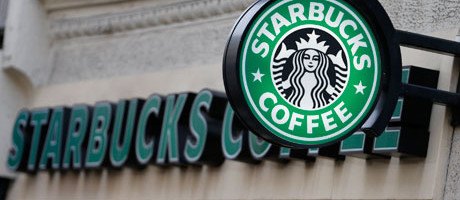The Value Creating Strategy of Starbucks

How the company continued its rapid growth while maintaining its competitive advantage
Founded in Seattle, Washington in 1971, Starbucks has grown to become the largest coffeehouse company in the world, with the mission to “inspire and nurture the human spirit – one person, one cup and one neighborhood at a time.” The company has grown to offer a variety of products, ranging from fresh foods and baked goods to brand merchandise and coffee equipment. It currently operates in 67 countries with a total of 22,519 stores. Revenue in 2014 reached $16.45B, with net income of $2.07B.
Business Model
Starbucks has managed to differentiate itself from competitors by creating the unique value proposition of becoming the “third place” for customers, after home and the workplace. Purchasing a cup of coffee became an “affordable luxury” and an experience in itself. Customers were able to order customized drinks and enjoy the beverage in a relaxed, upscale environment.
Starbucks primarily follows the standard retail business model, where it owns and operates most of its stores. Nonetheless, with emerging markets becoming an attractive landscape for investors, Starbucks has incorporated parts of the franchise business model into its strategy in order to capitalize on the expansion, yet maintain control of its business through its core strategy. In addition, the company doesn’t do any traditional advertising. Instead, Starbucks focuses on strengthening its value proposition by providing high-quality products and service. Since the average customer typically makes six visits per month (with the heaviest 20% of users visiting over 15 times per month), the company chooses to focus on delivering a consistent experience for its loyal customers, and by doing so, retain new visitors.
Operating Model
Starbucks serves 50 million customers per week worldwide. The company runs a complex operating model that begins all the way from procuring coffee beans and other products, to serving around 50 million customers per week.
However, in 2008 the company’s operational costs were growing even with steady sales, likely due to its high expansion rate. As a result, Starbucks chose to revamp its operating model to ensure efficiency, while remaining true to the organization’s mission and business strategy.
As part of the reassessment, management uncovered the underlying issue to be late deliveries due to excessive outsourcing agreements for transportation, which accounted for 65-70% of operating expenses.
To address these high costs, jobs were reorganized to fall into either of the following functions:
- Plan – such as production planning or launching a new product
- Source – divided into either coffee or non-coffee procurement
- Make – includes all manufacturing processes
- Deliver – includes all transportation, logistics and customer service activities
Each function performed a thorough analysis of its own processes to identify cost-savings and further efficiencies, with manufacturing and logistics having to address the company’s biggest operational challenge: supplying its 22,000 stores with over 70,000 deliveries per week. This led to the creation of one global logistics system, that allowed it to monitor its operations end-to-end. It begins with shipping ethically sourced coffee beans from Africa, Asia, and South America to coffee plants in the United States and Europe. The beans are roasted and packaged, then sent to regional distribution centers, located throughout the US, Europe and Asia, and finally to smaller distribution centers that also carry other materials such as baked goods, and paper items, who then combine them with the coffee beans to supply local stores. Most of these distribution centers are company owned; however, a number of them are run by third-party logistics companies. As a way to control the expenses associated with outsourcing, Starbucks implemented scorecards to measure third-party companies and to identify low performers.
As the company continues to expand and diversify its product offerings, it must keep in mind the potential tradeoff and performance implications between trying to control the majority of its operations internally and supplying its growing number of stores efficiently. At the moment, its operational model has proven effective in managing quality and compliments the competitive advantage of creating value by offering a consistent experience for its customers, regardless which Starbucks location they have chosen.
Sources:
http://marketrealist.com/2014/01/understanding-starbucks-cost-structure-operating-expenses/
http://www.starbucks.com/about-us/company-information/starbucks-company-profile
http://www.supplychainquarterly.com/topics/Procurement/scq201004starbucks/
http://www.evancarmichael.com/Other/612/Starbucks-Commercials.html




May: I loved how you laid out Starbucks’ operating model. I absolutely agree that one of the most important strengths that Starbucks has is the procurement of its coffee beans. I believe that without this crucial process, the company would not be able to provide the consistent experience to its customers for which it is appreciated. I am very curious to see how Starbucks will manage further expansion. In Mexico, Chile, Argentina and Colombia for example, they have divested their shares in Starbucks local companies and have left those operations for other companies to manage.